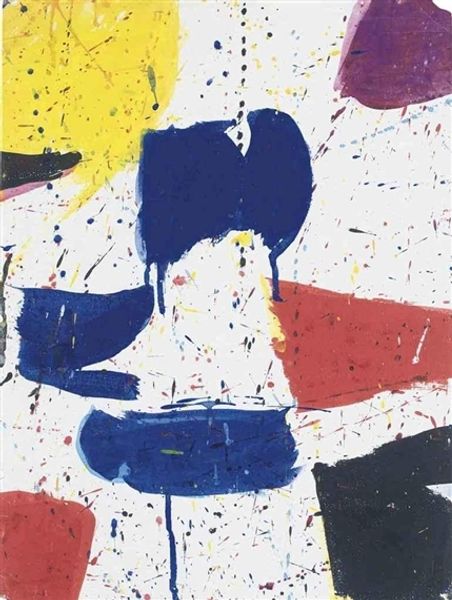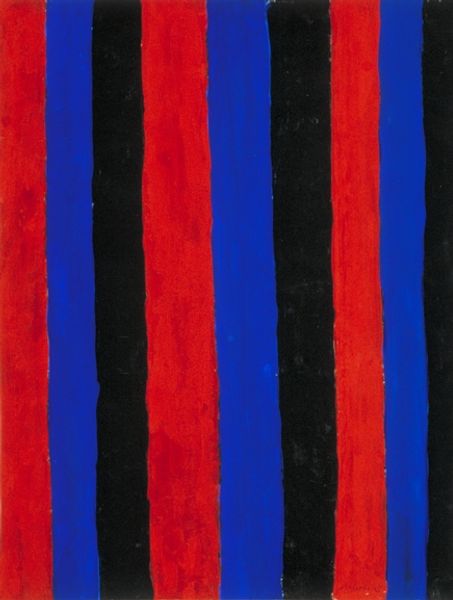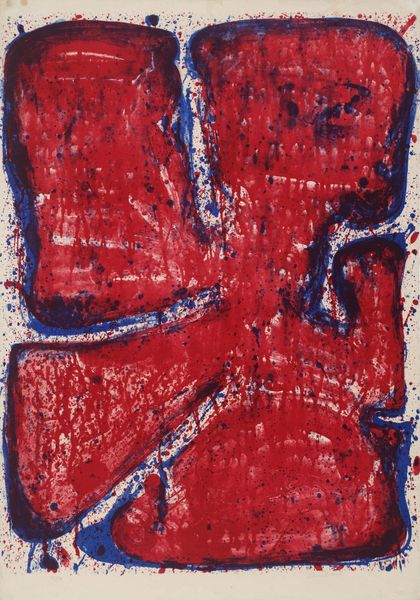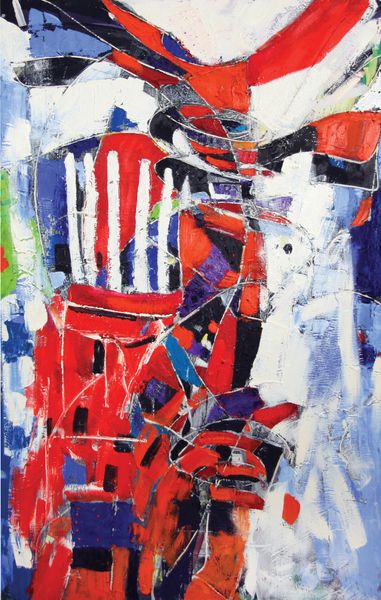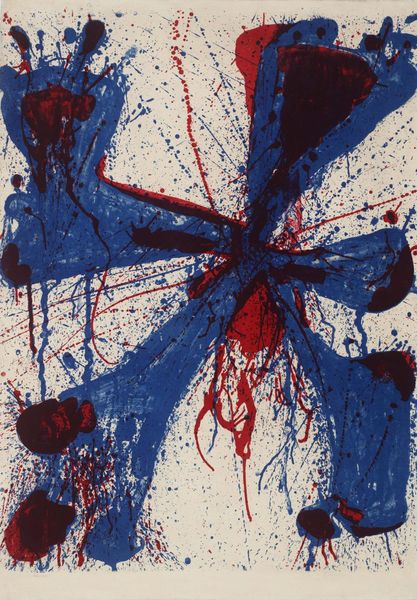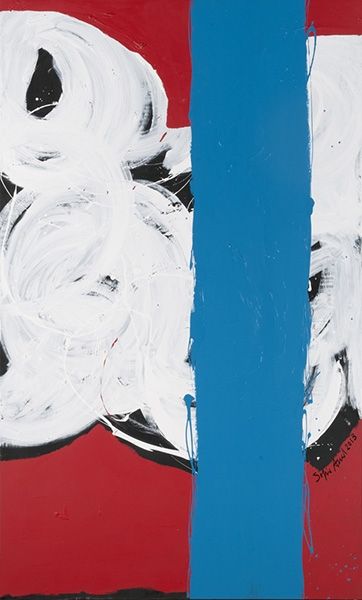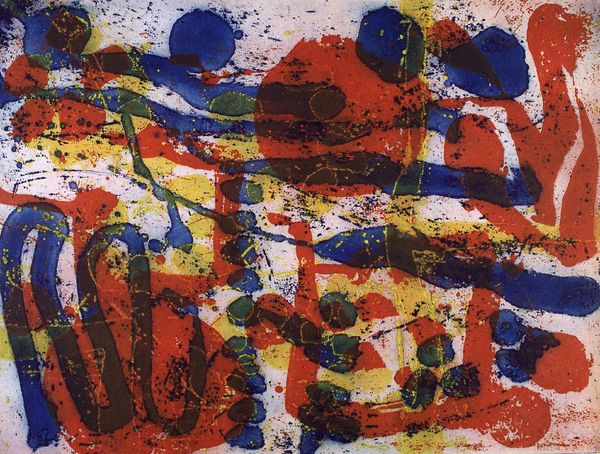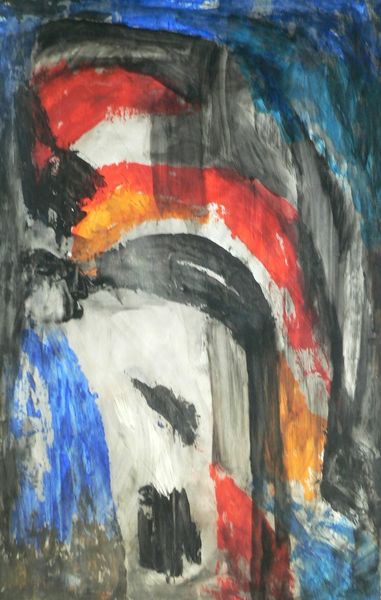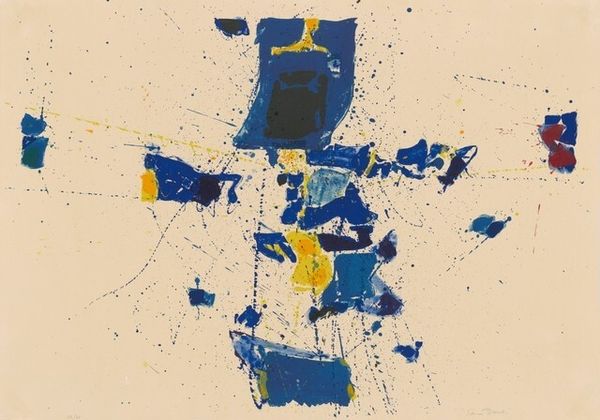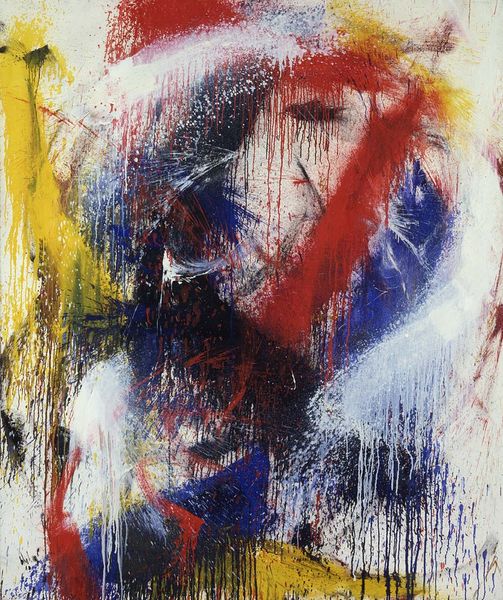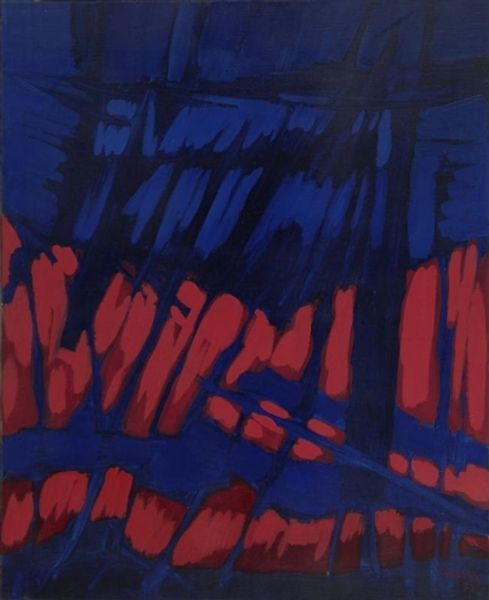
mixed-media, matter-painting, collage
#
abstract-expressionism
#
mixed-media
#
contemporary
#
matter-painting
#
collage
#
mixed mediaart
#
abstraction
#
line
#
modernism
Copyright: Dan Flavin,Fair Use
Curator: This compelling mixed-media piece, "Juan Gris in Paris (adieu Picabia)," was created in 1960 by Dan Flavin. It strikes me immediately with its striking use of collage and heavily textured blue field. What are your initial thoughts? Editor: A certain melancholy pervades this piece, don't you think? The crushed form, almost like discarded refuse, and the funereal blue. There's a palpable sense of something lost. Curator: The title itself suggests a departure or farewell. Picabia was a significant figure in the Dada and Surrealist movements, and Gris, of course, a key Cubist. Perhaps Flavin is signaling an end to those eras with this symbolic disintegration. The imagery holds this feeling. Editor: That's insightful. And the red lines, slicing through the composition - do you see them as lines of demarcation, almost like surveyor's marks? Indicating boundaries between movements? Or something more…violent? Curator: Violence certainly resonates. The bold red visually jars against the contemplative blue. Red, culturally and psychologically, often triggers powerful emotions – passion, anger, warning. Placed within this almost mournful setting, they become a stark visual disruption of everything that seems safe or predictable, yes. Editor: Do you think this can be an epitaph or an intentional attempt to shatter artistic convention by declaring the end of previous movements? Or do you believe it offers more ambiguity about new art development. Curator: A bit of both. Flavin’s turn toward what could be read as discarded Cubism makes us reconsider established categories. The “discard” can become powerful in his matter-painting collage style. And it might speak to something larger – the shifting tides of artistic influence and the inevitable obsolescence of even the most revolutionary movements. It encourages us to remember continuities in art more broadly. Editor: An evocative blend of reverence and revolution then. That contrast between that symbolic fragmentation and the smooth, impasto surface creates a lasting tension, it also brings an invitation to understand those shifts as more personal, perhaps even more emotionally driven? Curator: Exactly. And a challenge, maybe a playful one, to those who seek to categorize and contain art within neat historical boxes. An era ends, sure, but it ends imperfectly, beautifully. There's memory, still present within the fragments, even in the deepest blue. It makes for a rather remarkable, and unexpectedly poignant, piece.
Comments
No comments
Be the first to comment and join the conversation on the ultimate creative platform.
